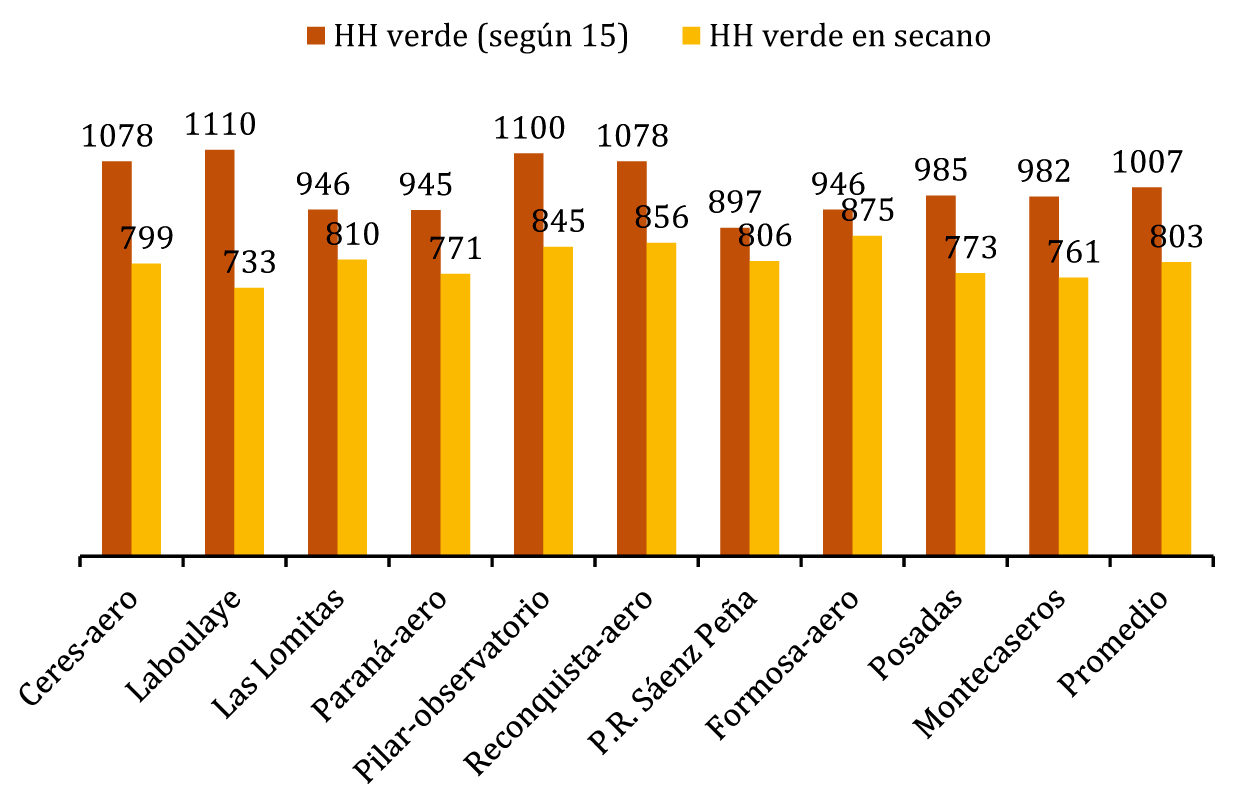Green and blue water footprint of corn (Zea mayz) production in central and northeastern provinces of argentina
Keywords:
water footprint, corn, AquaCrop, evapotranspiration, irrigation, rainfedAbstract
The water footprint (WF) of a crop shows the volume of evapotranspired water required to produce a given yield. The WF splits up into the green WF, which is the volume of rainwater consumed, and the blue WF, which refers to the volume of surface and ground water applied through irrigation. The project consists in calculating the green and blue WF value for corn in central and northeastern provinces of Argentina under rainfed, irrigated, and optimum irrigation and soil fertility conditions, and in analyzing the impacts of these practices. Internationally accepted methodology and the AquaCrop model were used to simulate ETc and crop yield. It was observed that by applying irrigation and increasing fertility the WF is reduced, this is due to the increase in yield. The green WF represents 92% of the combined sum (green plus blue). The calculated mean WF (green plus blue) is 803 L.kg-1 for rainfed farming, 602 L.kg-1 for irrigated agriculture; and 488 L.kg-1 for production under optimum irrigation and soil fertility conditions. This information helps producers to adequately assess irrigation practices and the efficient use of fertilizers, and raises awareness among water administrators of the need for suitable policies for sustainable water use.

Downloads
Published
Issue
Section
License
Aquellos autores/as que tengan publicaciones con esta revista, aceptan las Políticas Editoriales.


